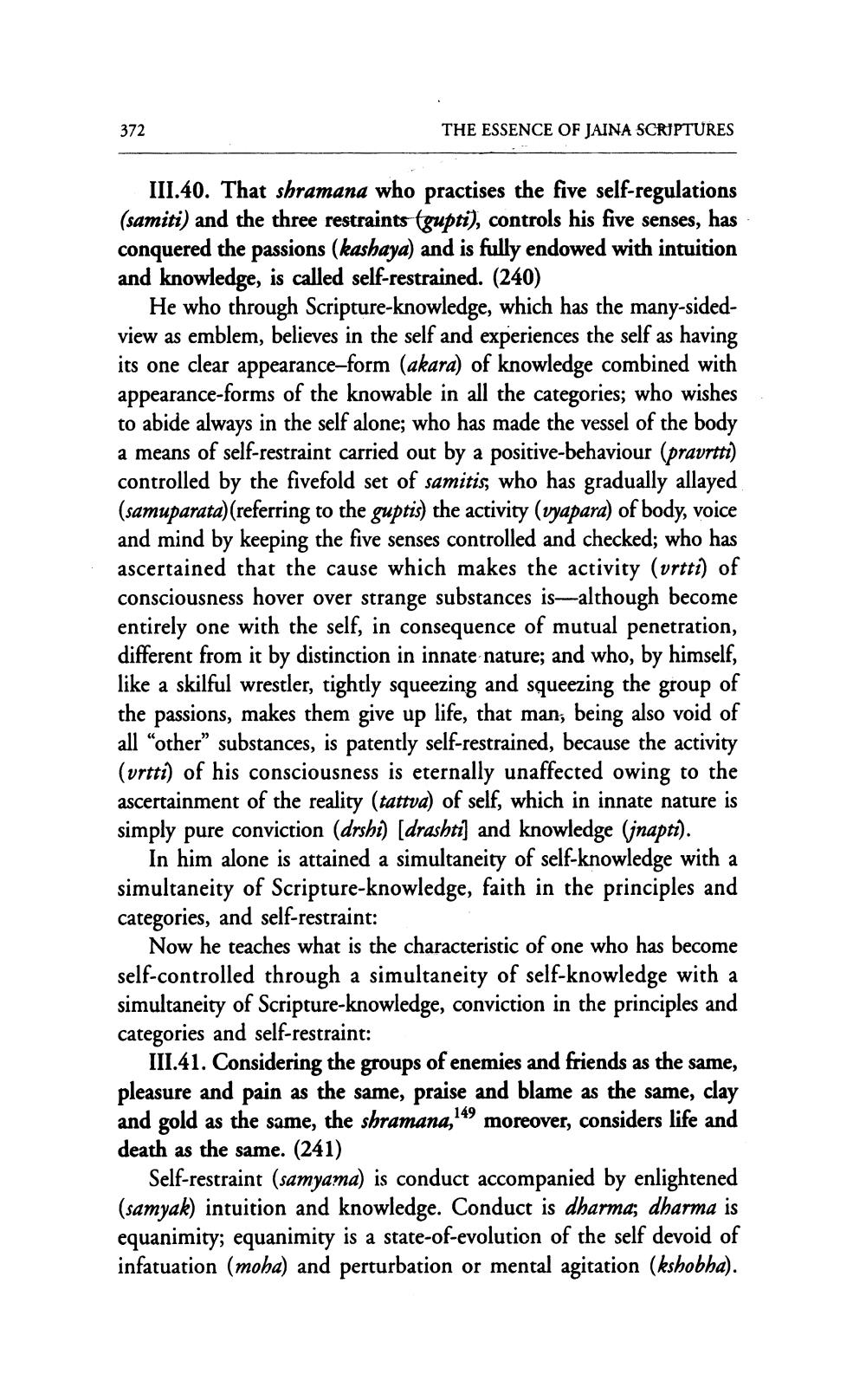________________
372
THE ESSENCE OF JAINA SCRIPTURES
III.40. That shramana who practises the five self-regulations (samiti) and the three restraints gupti), controls his five senses, has conquered the passions (kashaya) and is fully endowed with intuition and knowledge, is called self-restrained. (240)
He who through Scripture-knowledge, which has the many-sidedview as emblem, believes in the self and experiences the self as having its one clear appearance-form (akara) of knowledge combined with appearance-forms of the knowable in all the categories; who wishes to abide always in the self alone; who has made the vessel of the body a means of self-restraint carried out by a positive-behaviour (pravrtti) controlled by the fivefold set of samitis, who has gradually allayed (samuparata) (referring to the guptis) the activity (vyapara) of body, voice and mind by keeping the five senses controlled and checked; who has ascertained that the cause which makes the activity (urtti) of consciousness hover over strange substances is--although become entirely one with the self, in consequence of mutual penetration, different from it by distinction in innate nature; and who, by himself, like a skilful wrestler, tightly squeezing and squeezing the group of the passions, makes them give up life, that man, being also void of all “other” substances, is patently self-restrained, because the activity (urtti) of his consciousness is eternally unaffected owing to the ascertainment of the reality (tattva) of self, which in innate nature is simply pure conviction (drshi) (drashti] and knowledge (jnapti).
In him alone is attained a simultaneity of self-knowledge with a simultaneity of Scripture-knowledge, faith in the principles and categories, and self-restraint:
Now he teaches what is the characteristic of one who has become self-controlled through a simultaneity of self-knowledge with a simultaneity of Scripture-knowledge, conviction in the principles and categories and self-restraint:
III.41. Considering the groups of enemies and friends as the same, pleasure and pain as the same, praise and blame as the same, clay and gold as the same, the shramana,149 moreover, considers life and death as the same. (241)
Self-restraint (samyama) is conduct accompanied by enlightened (samyak) intuition and knowledge. Conduct is dharma; dharma is equanimity; equanimity is a state-of-evolution of the self devoid of infatuation (moha) and perturbation or mental agitation (kshobha).




